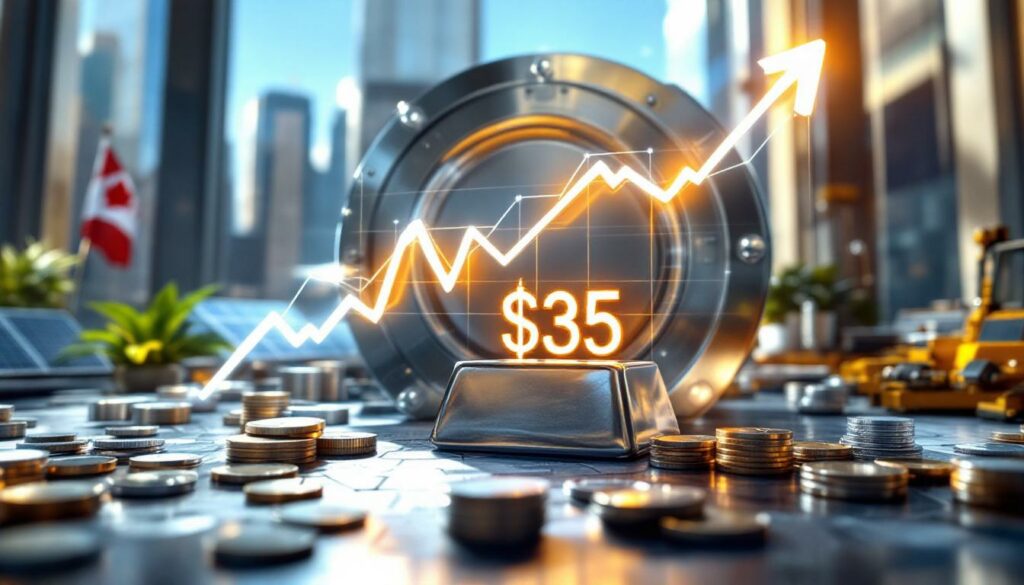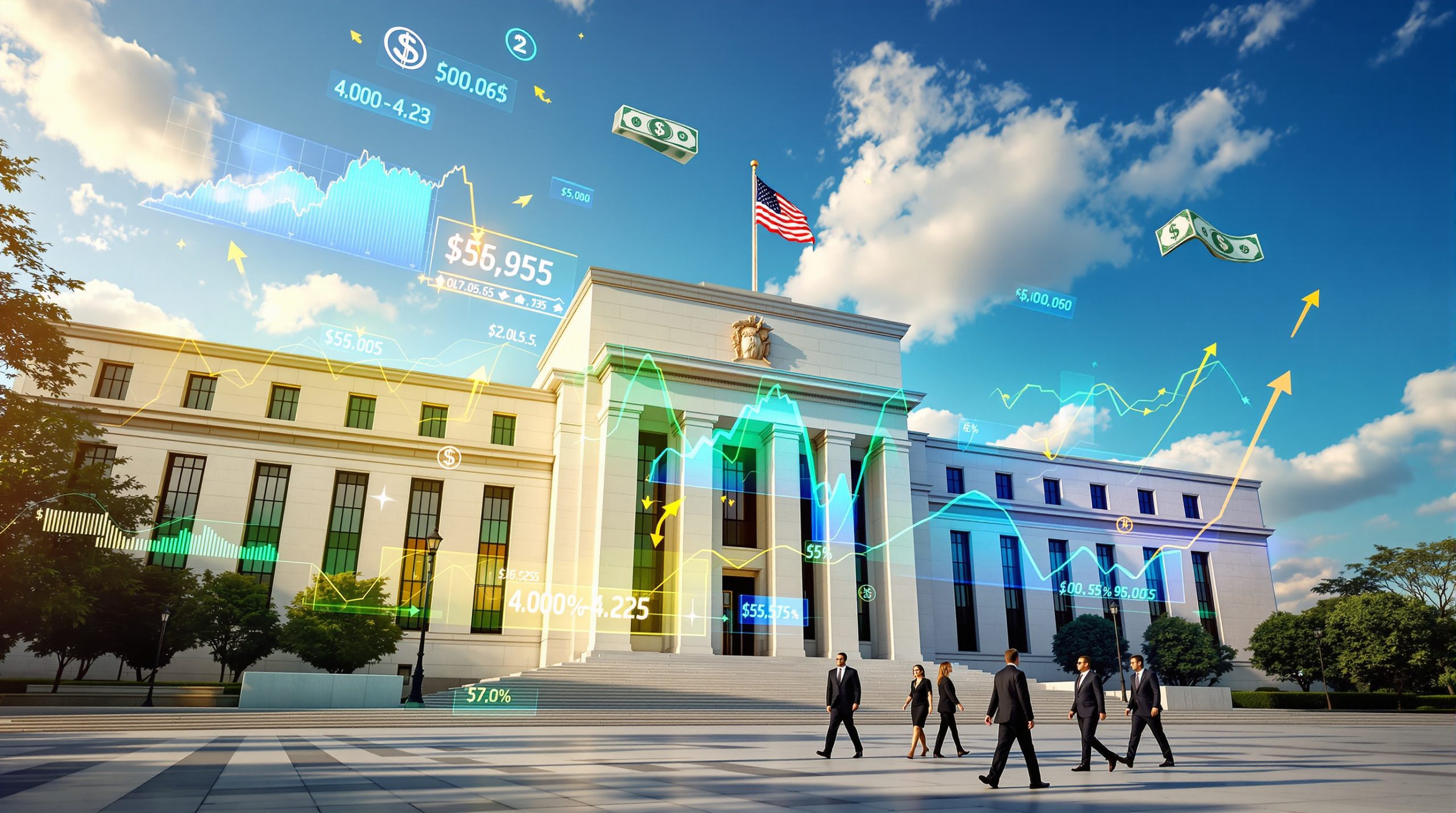What's Driving the Current Silver Market Rally?
The silver market is experiencing a significant rally in 2024, with prices surging past key resistance levels and establishing new support zones. This precious metal's price action signals what many experts believe could be the early stages of a prolonged bull market. Several critical factors are converging to create this upward momentum in silver market trends.
Supply Shortage and Backwardation Signals
One of the most telling indicators of silver's current market dynamics is the presence of backwardation—a rare market condition where spot prices trade at a premium to futures prices. This unusual circumstance sends a clear signal of immediate physical supply shortages.
"Silver is in backwardation right now, which is clearly indicative of a supply shortage. The daily trading volumes on exchanges like COMEX and LME vastly exceed what's being mined globally," explains Dan Stewart, CEO of Juggernaut Exploration.
This supply-demand imbalance becomes even more apparent when examining trading volumes. On typical trading days, COMEX and the London Metal Exchange (LME) witness silver volumes that dramatically exceed global mining production capacity. With silver recently breaking through the psychologically important $35 resistance level and consolidating around $36, market technicians view this as confirmation of continued momentum.
Central Bank Accumulation Patterns
Central banks worldwide have been accumulating precious metals at record rates over the past decade, creating a solid foundation of institutional support for prices. This trend represents a significant shift in monetary policy approaches.
- Central banks added over 1,136 tonnes of gold to reserves in 2022-2023
- This institutional buying extends indirectly to silver markets
- Emerging market central banks have been particularly aggressive buyers
- Western central banks have slowed or halted decades of selling programs
The implementation of Basel III regulations, which took effect July 1, classifies gold as a Tier 1 asset for banking reserves. While this directly affects gold, silver benefits by association as the monetary metal's historical companion.
"When banks start treating gold as money again through these regulatory changes, it impacts the entire precious metals complex," notes Stewart. "Financial institutions increasingly view both gold and silver as essential monetary assets rather than speculative commodities."
How Are Market Fundamentals Shaping Silver's Trajectory?
The fundamental drivers behind silver's price action extend beyond short-term trading patterns, with structural factors creating what appears to be sustainable upward pressure on prices.
Supply-Demand Imbalance Analysis
Industrial demand for silver continues to expand across multiple sectors, creating competition for available supply. The ongoing silver supply deficits create a unique market dynamic unlike gold, which is primarily used for investment and jewelry:
- Electronics: Silver remains essential in circuit boards, switches, and conductive applications
- Renewable Energy: Solar panel production requires significant silver inputs (approximately 20g per panel)
- Medical Applications: Silver's antimicrobial properties drive pharmaceutical and healthcare usage
- Electric Vehicles: Each EV contains approximately 25-50 grams of silver in various components
Simultaneously, mining production faces significant constraints. New high-grade silver discoveries have become increasingly rare, particularly in politically stable jurisdictions. The current price consolidation around $36 reflects growing market recognition of these structural supply challenges.
"We're witnessing the establishment of long-term bull market conditions as demand consistently outpaces available supply," explains Stewart. "This isn't a temporary imbalance but rather a structural shift in the market."
Geopolitical Risk Premium
Silver assets located in politically stable jurisdictions now command premium valuations compared to those in regions with higher political risk. This jurisdictional premium has become increasingly pronounced.
"The physical silver coming out of the ground in the Dominican Republic is chemically identical to silver from Timmins, Ontario," Stewart points out. "The difference is entirely in the valuation the market assigns based on jurisdictional risk."
Tier-one mining jurisdictions like Canada, the United States, and Australia offer significantly lower risk profiles for silver production, translating to higher asset valuations. This geographic concentration creates vulnerabilities to regional disruptions, as approximately 60% of global silver production comes from just five countries.
Price differentials between identical silver assets can vary by 50-300% based solely on jurisdictional risk factors, creating significant opportunities for investors who understand these dynamics.
What Challenges Face the Silver Mining Sector?
Despite favorable metal prices, the silver mining sector confronts substantial obstacles that limit supply growth and create opportunities for well-positioned companies.
Economic Operating Environment
Current market conditions present a favorable operating environment for existing silver producers, with moderate input costs creating margin expansion opportunities:
- Energy costs remain relatively moderate with oil trading in the $62-65 per barrel range
- Mining equipment and supplies have not yet seen dramatic inflation
- Skilled labor availability has improved in many regions
- Lower production costs improve profit margins for existing operations
"One of the biggest opportunities in the current market is that input costs remain extraordinarily low relative to metal prices," notes Stewart. "This environment allows miners to reactivate previously uneconomic projects and expand existing operations."
This economic backdrop improves profit margins for existing operations and temporarily lowers the economic viability thresholds for new projects. Companies with permitted projects on standby can rapidly respond to these favorable conditions.
Discovery and Development Hurdles
Despite the economic incentives, bringing new silver supply online faces significant challenges:
- Discovery Scarcity: High-grade silver discoveries in stable jurisdictions have become increasingly rare
- Development Timeline: The gap between discovery and production has expanded to 7-10 years in many cases
- Permitting Complexity: Regulatory approval processes create extended timelines even for promising projects
- Capital Constraints: Financing for new silver projects remains challenging despite improved metal prices
"The most significant challenge is the severe lack of new high-grade discoveries, particularly in geopolitically stable regions," Stewart emphasizes. "When companies do make discoveries, the permitting and development timeline has extended dramatically compared to previous decades."
These obstacles create a paradoxical situation: rising prices but limited supply response. For investors, this translates to potential premium valuations for companies with permitted projects or existing operations that can expand production.
How Should Investors Approach the Silver Market?
Navigating the silver market requires understanding its dual nature as both an industrial commodity and monetary metal. Strategic approaches differ significantly from conventional equity or fixed-income investments.
Physical Silver Investment Strategy
Physical silver represents a foundational approach for many investors seeking direct exposure to the metal:
- Long-term Perspective: Silver functions best as a long-term store of value rather than short-term trading vehicle
- Accumulation Strategy: Regular purchases during price dips align with institutional approaches
- Counterparty Risk Elimination: Physical holdings avoid financial intermediary risks
- Allocation Considerations: Most advisors suggest 5-10% portfolio allocation to precious metals
"Silver and gold are long-term investments—true stores of wealth rather than speculative assets," Stewart advises. "Patient accumulation strategies have historically rewarded investors who understand the metals' monetary role."
When considering physical silver, investors should evaluate storage security, premium costs above spot prices, and liquidity needs. Forms range from government-minted coins with lower premiums to smaller denominations that may command higher premiums but offer greater divisibility.
Mining Equity Considerations
For investors seeking potentially higher returns with corresponding risk, silver mining equities offer operational leverage to metal prices:
- Jurisdictional Focus: Prioritize companies operating in tier-one jurisdictions with stable regulatory environments
- Management Assessment: Evaluate leadership teams with proven track records in the precious metals space
- Project Economics: Assess operations across various price scenarios to understand leverage potential
- Exploration Upside: Consider exploration companies with discovery potential in established districts
"The mining sector offers significant opportunities, but company selection is crucial," Stewart cautions. "A company with projects in Canada, the United States, or Australia typically commands a substantial premium over identical assets in less stable jurisdictions."
Investors should particularly focus on companies with strong balance sheets, clear paths to production, and management teams that have successfully navigated previous market cycles. The extreme cyclicality of the mining sector rewards disciplined operators who can survive downturns and expand during favorable conditions.
What Broader Economic Factors Could Impact Silver Prices?
Silver prices respond to numerous macroeconomic factors beyond the direct supply-demand dynamics of the metal itself. Several significant economic trends bear watching for their potential impact.
Consumer Financial Health Concerns
Consumer spending capacity shows concerning signs of exhaustion across major economies:
- Household debt ratios have increased dramatically (Canada's debt ratio approaching 200%, up from historical 60%)
- Credit card balances have reached record highs in multiple developed economies
- Pandemic-era stimulus funds have been depleted across consumer segments
- Rising interest rates have increased debt servicing costs for households
"The consumer has essentially tapped out in the United States and Canada," Stewart observes. "We're seeing household debt ratios in Canada approaching 200%, up from historical norms around 60%. These debt levels are simply unsustainable."
This potential consumer spending contraction could trigger broader economic slowdowns, traditionally beneficial for precious metals as safe-haven assets. However, industrial demand for silver might simultaneously decline, creating countervailing forces on prices.
Housing Market Indicators
Real estate markets exhibit troubling trends that could impact economic activity:
- Housing starts in major markets have declined to levels not seen since the 2008 financial crisis
- Transaction volumes remain significantly depressed year-over-year
- Elevated interest rates continue to pressure affordability metrics
- Commercial real estate faces particular challenges with remote work trends
"Housing starts are at lows we haven't seen since the financial crisis of 2008," notes Stewart. "The ripple effects through construction-related industries could be substantial."
Silver demand is linked to construction through electrical systems, appliances, and increasingly, smart home technologies. A prolonged housing slump could reduce demand from this sector, even as investment demand potentially increases in response to economic uncertainty.
What Technical Indicators Support Silver's Bullish Outlook?
Technical analysis provides additional perspective on silver's potential trajectory, with several indicators suggesting continued strength.
Price Pattern Analysis
Chart patterns reveal significant technical developments supporting silver's bullish case:
- Breaking through the critical $35 resistance level represents a decisive technical achievement
- Current consolidation around $36 suggests building momentum for potential further advances
- Multiple tests of new support levels have held, confirming the strength of the breakout
- Long-term chart patterns indicate the potential beginning of a new secular bull market
"Breaking through that $35 resistance level was psychologically and technically significant," Stewart explains. "What we're seeing now is consolidation before the next potential move higher."
This technical strength is particularly notable given silver's historical volatility. Previous resistance levels now appear to function as support during pullbacks, creating a series of higher lows that technicians view favorably.
Comparison to Historical Silver Bull Markets
Current market conditions share several similarities with previous significant silver bull markets:
- Price action suggests early-stage positioning in what could become an extended upward cycle
- Volatility patterns remain consistent with accumulation phase characteristics seen in 2004-2006
- Technical momentum indicators support continued strength without reaching overbought extremes
- The gold-silver ratio remains historically elevated, suggesting further silver outperformance potential
These technical indicators align with fundamental factors to create a compelling case for silver's continued strength. Historical silver performance patterns suggest that once silver breaks major resistance levels after extended consolidation periods, subsequent moves can be both substantial and sustained.
FAQ About Silver Market Trends
Is silver currently undervalued compared to gold?
The gold-to-silver ratio remains historically elevated at approximately 75:1, compared to the long-term average of 55:1 and geological abundance ratio of approximately 15:1. This suggests potential for silver to outperform gold if the ratio normalizes toward historical means.
Several factors support this normalization thesis:
- Industrial demand creates additional price drivers beyond monetary factors
- Supply constraints appear more acute in silver than gold
- Production costs relative to current prices favor silver miners
- Historical bull markets typically see the ratio compress significantly
How might industrial demand affect silver prices in the coming years?
Growing applications in renewable energy, electronics, and medical fields are creating substantial new demand sources that compete directly with investment demand. Key sectors driving industrial consumption include:
- Solar Energy: Photovoltaic installations require approximately 20g of silver per panel
- Electric Vehicles: Each EV uses 25-50g of silver in various electrical components
- 5G Infrastructure: Advanced telecommunications systems utilize silver in multiple applications
- Medical Devices: Silver's antimicrobial properties drive pharmaceutical and healthcare applications
This industrial demand creates a fundamental difference between silver and gold markets, potentially supporting higher price levels during periods of economic expansion while limiting downside during contractions.
What role does silver play in a diversified investment portfolio?
Silver offers unique characteristics as both a precious and industrial metal, potentially providing:
- Inflation Protection: Historical performance during inflationary periods has been strong
- Portfolio Diversification: Correlation patterns differ from conventional financial assets
- Crisis Insurance: Tendency to perform during severe market dislocations
- Industrial Exposure: Participation in technological growth trends without direct equity risk
Most financial advisors suggest a 5-10% allocation to precious metals within a diversified portfolio, with silver comprising approximately 20-40% of that metals allocation depending on individual risk tolerance and investment goals.
How do mining stock investments compare to physical silver holdings?
Mining stocks offer operational leverage to silver prices but carry company-specific risks:
Mining Stocks:
- Potential for multiplied returns relative to metal price movements
- Exposure to exploration success and production expansion
- Dividend potential during profitable periods
- Company-specific risks including management, jurisdiction, and technical challenges
Physical Silver:
- Direct exposure without operational or management risk
- No counterparty risk (if properly stored)
- Potential tax advantages in certain jurisdictions
- Liquidity and divisibility depending on form (coins, bars)
The optimal approach for many investors combines both strategies, using physical holdings as a foundation while selectively adding mining equities for enhanced return potential during bull markets. Furthermore, understanding silver squeeze strategies can provide additional advantages during times of market stress.
According to Silver Price History, silver's volatility can create excellent buying opportunities during market corrections. Additionally, research from the Silver Institute indicates that continued industrial growth combined with potential silver market squeeze conditions could drive prices significantly higher in coming years.
Disclaimer: This article contains market analysis and investment information that should not be construed as personalized investment advice. All investments involve risk, including the potential loss of principal. Consult with a qualified financial advisor before making investment decisions based on the information presented here.
Want to Spot the Next Major Mineral Discovery?
Discovery Alert's proprietary Discovery IQ model instantly notifies investors about significant ASX mineral discoveries, turning complex data into actionable investment opportunities like those seen in silver markets. Visit our discoveries page to understand how major mineral finds can generate substantial returns and begin your 30-day free trial today.




